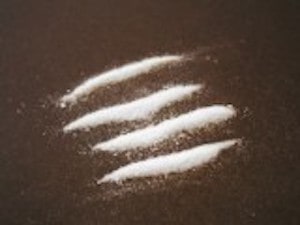Since 1993
Trafficking Weights Not Always Accurate

Just turn on your TV, and take note of all the shows like C.S.I., and NCIS, and on and on and on, that deal with scientific evidence. Sure, some of this stuff is pretty far out, after all, it would be a pretty boring show if all they did was fingerprint a crime scene and match the prints. Yet, scientific procedures rarely turn out to be as accurate as portrayed on tv. And, the most simple scientific procedures, such as weighing evidence, can be completely worthless if not done properly. For those familiar with Orlando DUI law, you may expect a challenge to the calibration of the scales used to weigh the drugs (a la Intoxilyzer motions), or challenges regarding the certification of chromatographs used to identify the drugs. But no, the problems were going to discuss arise out of pure and simple human error. And in Central Florida criminal cases, any Orlando criminal defense attorney can attest to the fact that there’s plenty of lab reporting problems (does the weight a cop put in the arrest report ever match FDLE’s testing?). Let’s take a look at one such case.
In Purvis v. State, 43 So.3d 734 (Fla. 2nd DCA 2010), Purvis was convicted of trafficking in cocaine by possession of more than 400 grams (this carries a 15 year minimum mandatory prison sentence, for those keeping score at home). The problem really came down to the way the cocaine was handled by the state’s chemist. The 400+ grams in question came in as five separate containers of cocaine, with each container a different weight, each containing 4-7 bags inside. There were a total of 27 separate bags of cocaine. The state chemist decided to dump all of the cocaine from each container into one big pile, and found that each big pile tested positive for cocaine. Ouch. The problem here is, now that the chemist has blended the baggies together, how can you prove/disprove that some of the baggies contained some other white powdery substance? I guess we’ll never know, because they’re now all mixed up.
The appeals court denied Purvis’ appeal regarding the ‘commingling’ of the substances because Purvis’ attorney did not object at trial to the admission of the evidence. So, Purvis did the next best thing–he appealed his conviction based upon his attorney’s ineffective assistance for not objecting to the commingling. Finally, the court granted his appeal and reversed his trafficking conviction in part, citing several other cases involving the commingling of substances, such as Sheridan v. State, 850 So.2d 638 (Fla. 2d DCA 2003), where the court held that the evidence was insufficient to prove a trafficking weight of powdered methamphetamine where two bags of white substance were combined before testing and weighing. Id. at 640. The court also mentioned Campbell v. State, 563 So.2d 202, 202 (Fla. 3d DCA 1990), where a trafficking conviction was reversed because the chemist tested contents of only one or two capsules found in defendant’s change purse and suspected to contain heroin; and State v. Clark, 538 So.2d 500, 501 (Fla. 3d DCA 1989), where the court affirmed a trial court’s ruling that the State violated defendants’ due process rights by commingling powdery contents of tested capsules with contents of untested capsules prior to weighing.








